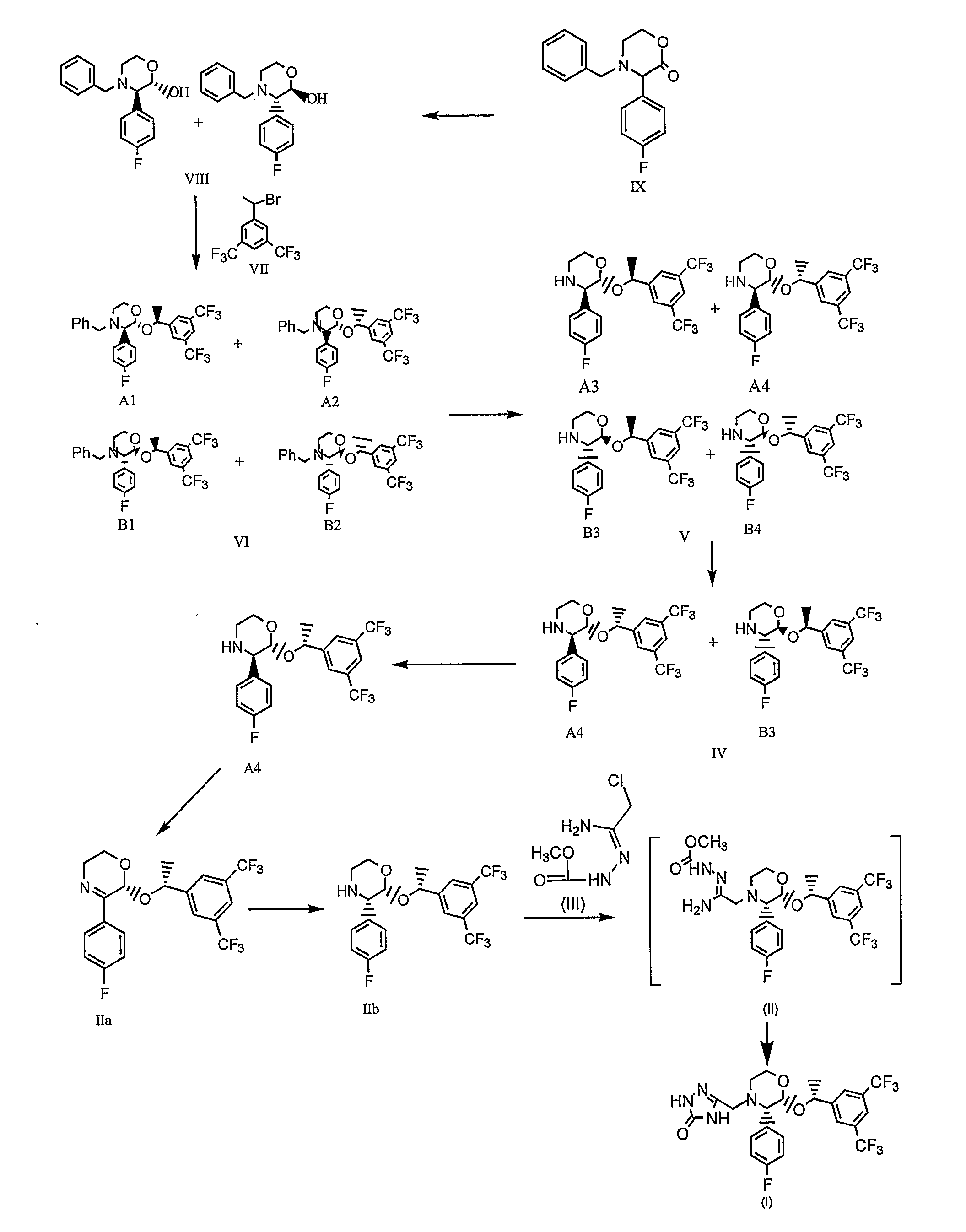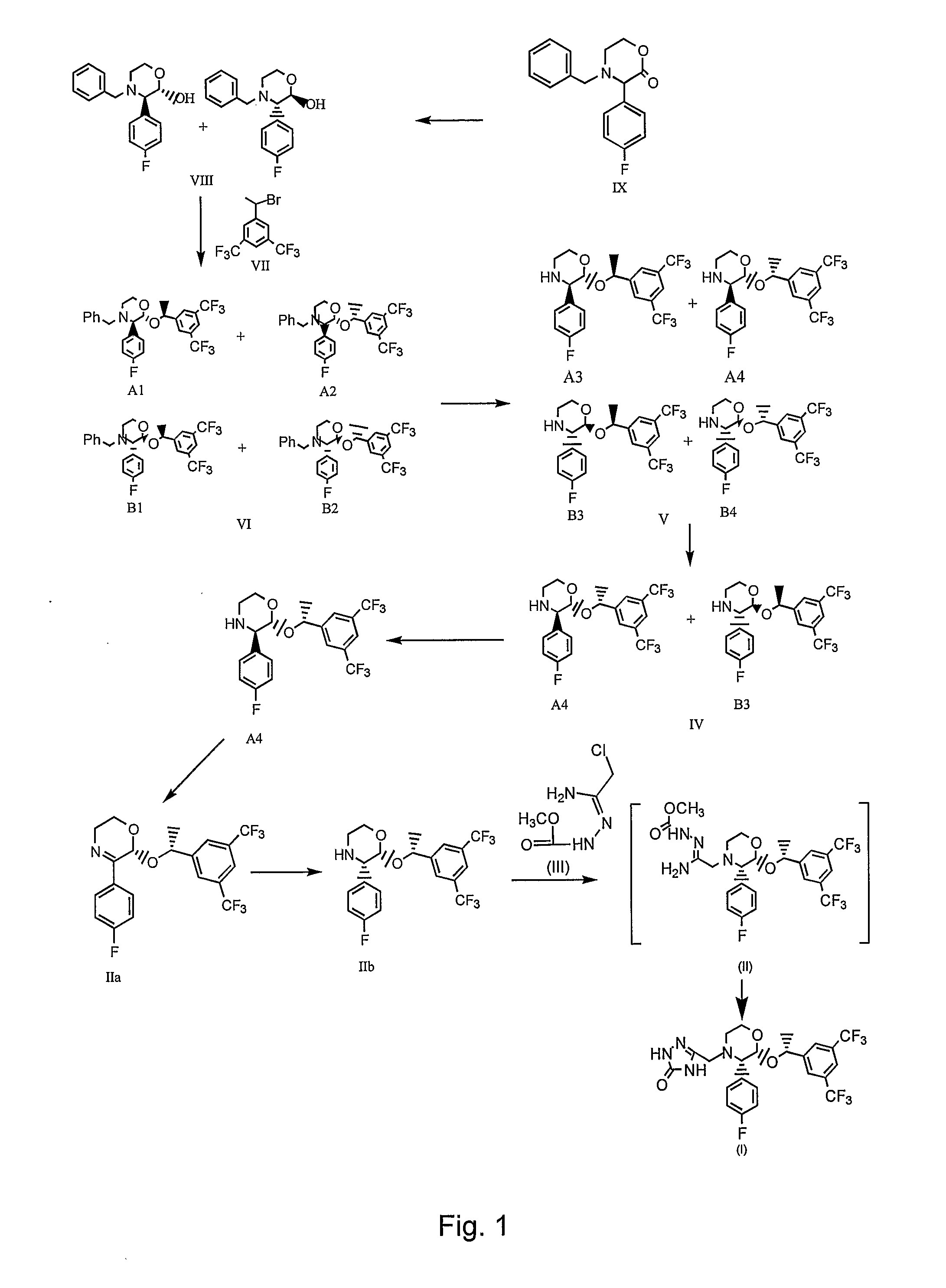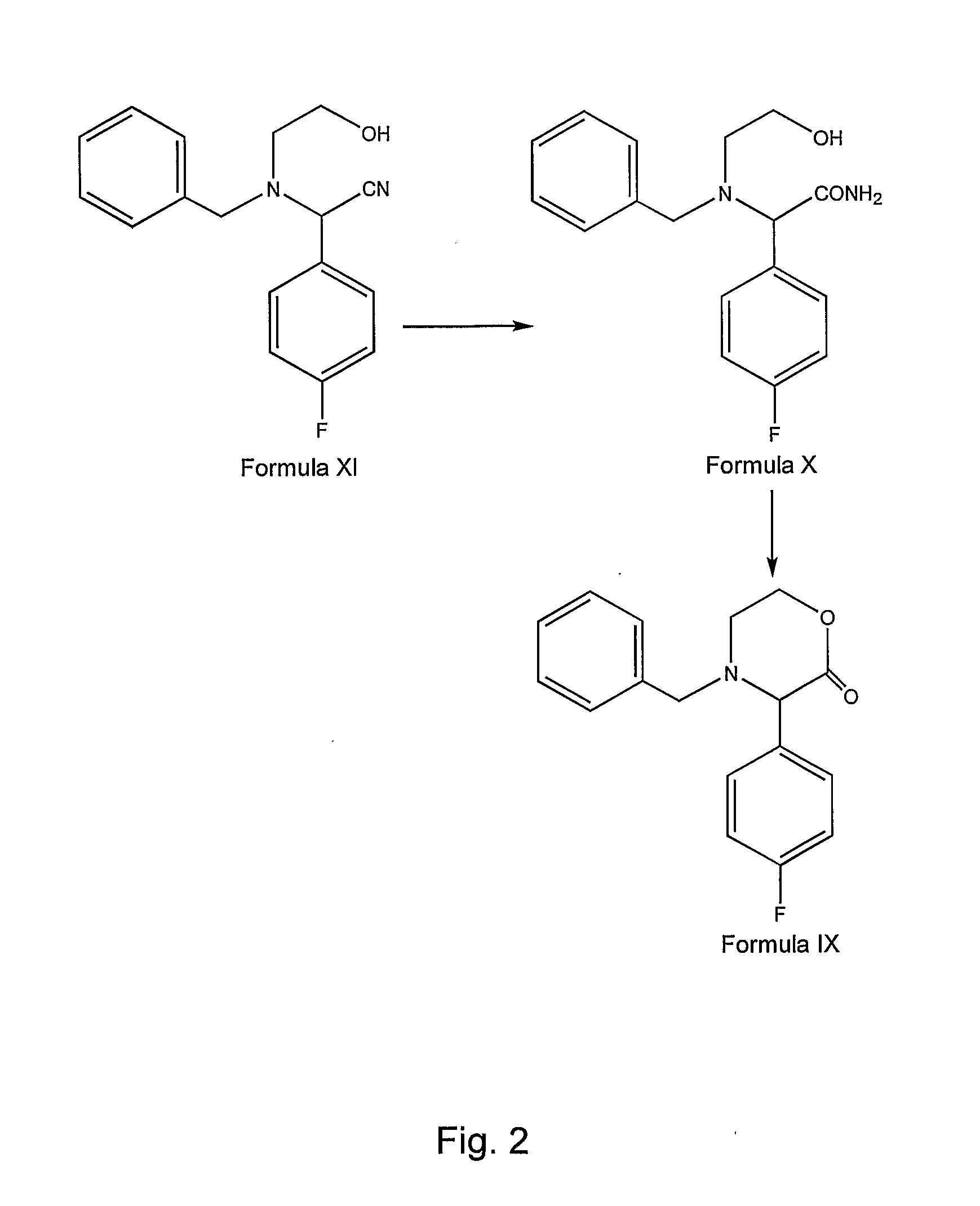Preparation of aprepitant
a technology of aprepitant and aprepitant, which is applied in the field of preparation of aprepitant, can solve the problems of inability to manufacture aprepitant, and inability to meet the requirements of industrial and economic feasibility, and achieves the effects of reducing the number of steps
- Summary
- Abstract
- Description
- Claims
- Application Information
AI Technical Summary
Benefits of technology
Problems solved by technology
Method used
Image
Examples
example 1
Preparation of (±)-trans-N-BENZYL-3-(4-FLUOROPHENYL)-1,4-OXAZIN-2-OL (Formula VIII)
[0211]500 g of N-benzyl-3-(4-fluorophenyl)-1,4-oxazin-2-one of Formula IX and 5 L of toluene were charged into a clean and dry 4 neck round bottom flask and the contents were stirred for about 15 minutes. Resultant solution was cooled to about −30° C. followed by addition of 5 L of 1M lithium tri-sec-butylborohydride (“L-selectride”) (950 g in 4050 ml of tetrahydrofuran) over about 30 minutes. The reaction mixture was stirred at about −25° C. for about 1 hour. After the completion of the reaction, the reaction solution was allowed to attain a temperature of about 10° C. The reaction mixture was quenched by the addition of 2 L of 40% aqueous sodium bicarbonate solution over about 30 minutes. Organic and aqueous phases were separated and the aqueous phase was extracted with 1 L of toluene followed by separation of organic and aqueous phases. Combined organic layers were extracted with an 8% v / v aqueous ...
example 2
Preparation of (±)-trans-4-BENZYL-2-[2-(3,5-BIS-TRIFLUORO METHYLPHENYL)ETHOXY]-3-(4-FLUOROPHENYL)MORPHOLINE (Formula VI)
[0214]250 g of the compound of Formula VIII obtained from Example 1, 280 g of 1-(1-bromoethyl)-3,5-bis-trifluoromethyl-benzene of Formula VII and 2.5 L of N,N-dimethylformamide (DMF) were charged into a clean and dry 4neck round bottom flask followed by stirring for about 15 minutes. 35 g of sodium hydroxide was charged followed by heating to about 70° C. for about 2 hours. After completion of the reaction, the reaction mass was cooled to about 30° C. followed by treating with mixture of 2.5 L of water and 1250 ml of toluene. The organic layer was separated and the resultant aqueous phase was extracted with 1250 ml of toluene. Organic and aqueous layers were separated and both the organic layers were combined. The total organic layer was washed with 2×2.5 L of water followed by separation of organic and aqueous layers. Organic layer was distilled completely at abou...
example 3
Preparation of Paratoluenesulfonic Acid Salt of (±)-trans-2-[1-(3,5-BIS-TRIFLUOROMETHYLPHENYL)ETHOXYL-3-(4-FLUOROPHENYL)-MORPHOLINE (Formula IV)
[0216]300 g of the compound of Formula VI obtained from Example 2, 600 ml of methanol, 108.1 g of para-toluenesulfonic acid, 2.4 L of toluene and 300 g of 5% w / w palladium supported on carbon were charged in a clean and dry autoclave vessel. 3.5 kg / cm2 of dry hydrogen gas was passed into the reaction suspension at about 30° C. and maintained over a period of about 4 hours. After completion of the reaction, the reaction mass was filtered on celite and the celite was washed with 600 ml of methanol. The resultant filtrate was distilled completely at about 60° C. under vacuum to afford 350 g of compound of Formula V. The obtained compound was slurried in 3 L of acetonitrile at 30° C. for about 2 hours followed by filtration of the solid and the solid was washed with 600 ml of acetonitrile to afford 120 g of the desired title diastereomer salt.
[0...
PUM
 Login to View More
Login to View More Abstract
Description
Claims
Application Information
 Login to View More
Login to View More - R&D
- Intellectual Property
- Life Sciences
- Materials
- Tech Scout
- Unparalleled Data Quality
- Higher Quality Content
- 60% Fewer Hallucinations
Browse by: Latest US Patents, China's latest patents, Technical Efficacy Thesaurus, Application Domain, Technology Topic, Popular Technical Reports.
© 2025 PatSnap. All rights reserved.Legal|Privacy policy|Modern Slavery Act Transparency Statement|Sitemap|About US| Contact US: help@patsnap.com



